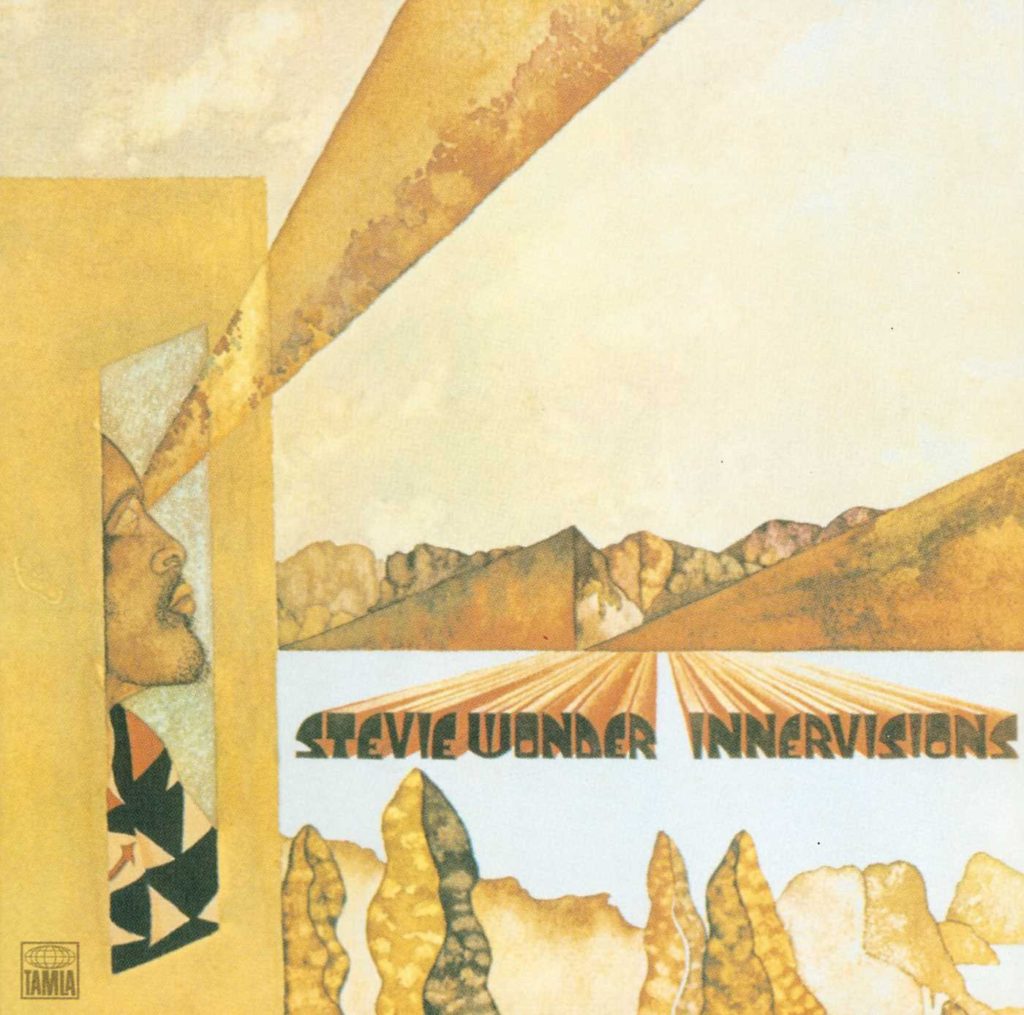Nestled between Talking Book, Fulfillingness’ First Finale and the revered Songs in the Key of Life, Innervisions is the second album of Stevie Wonder’s ’70s stroke of genius. Its position at the crux of both Nixon’s Presidency and the Watergate scandal strips it of the uplifted tone found in the adjacent albums to reveal a more pensive undercoat—a sound which ultimately rises to the political occasion without dampening his classic spirit. While the album lacks an eternal party-rocking hit like “Superstition” or “Sir Duke,” its political pertinence makes us wonder how Wonder kept his time machine hidden all these years.
“Visions,” the album’s title track, encompasses Wonder’s cognizance of the age: “People hand in hand / Have I lived to see the milk and honey land? / Where hate’s a dream and love forever stands / Or is this a vision in my mind?” Wonder’s lyric challenges the criticisms of his romantic, idealist aesthetic with a sobriety that makes it clear that his blindness dampens no aspect of his political consciousness.
While “Visions” crystallizes the album’s thematic and musical qualities, it leaves the synthesis to the rest of the album. “Living For The City” is a sharp and quippy criticism of America’s prevailing racial philosophies—and while protest songs were a dime a dozen the early 70’s, “Living For The City’s” bold and poignant vignette differentiates it from the more straightforward “What’s Going On’s” of the era. The album’s primer, “Too High,” is another conscious vignette with a vastly different musical stride from “Living For The City.” Spacy, off-kilter harmonies and bubbly synths invoke the feeling of an anxious high, and its spiraling narrative of drug use leads smoothly into “Visions” as a strong supportive substance for its argument. “Jesus Children Of America’s” practice-what-you-preach thesis tackles religion in a time when Black American music, including Wonder’s own, was intertwined with it. The result is a heartfelt criticism of hypocrisy unlike the tedious back-and-forth of most religious and agnostic circles. In a not-so-subtle nod to Nixon’s imploding presidency, “He’s Misstra Know-It-All” closes off Innervisions to the tune of America’s sleazy politicians and entrepreneurs. And while Wonder’s true presidential scathing wouldn’t come until 1974’s “You Haven’t Done Nothin’,” “He’s Misstra Know-It-All” certainly kindled its flame.
Even when Innervisions descends into Wonder’s typical romance—see “Golden Lady” and “All In Love Is Fair”—it still holds tight to the message presented in “Visions.” Beyond serving as a reprise from the density of the previous tracks, these idyllic moments go hand-in-hand with their solemn counterparts—reminding us to strive for the good in the world. Ultimately, Innervisions is a compelling and pertinent record, and while it still contains the distinct uplifted tones of Wonder’s work, its disgust of the ‘70s American ethos is particularly palpable.





Go Felix!!!